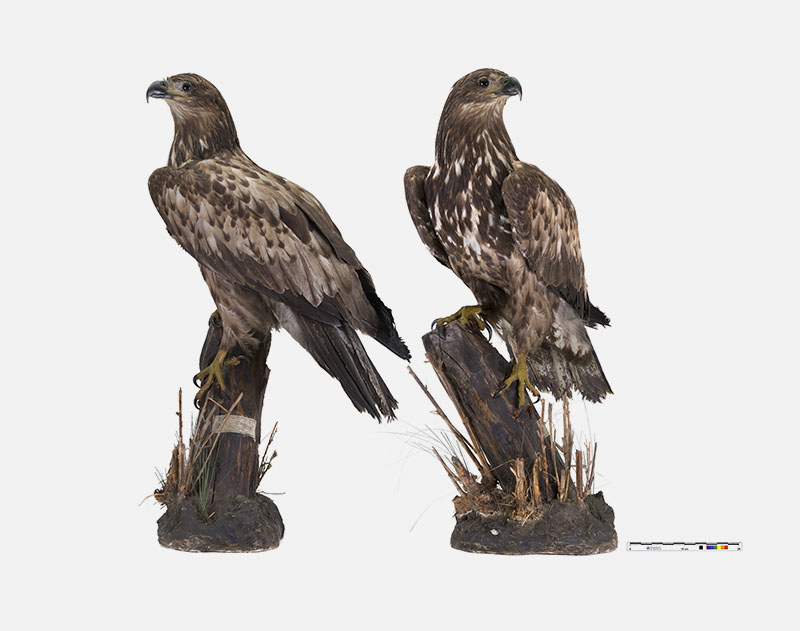Pigargo europeo (Haliaeetus albicilla). MUVHNZJ0610. Padre Ignacio Sala S. J. Collection Deposited at the M[UV]HN.
White-tailed eagle, Haliaeetus albicilla, is a species that, in the present, only breeds in the north of Europe and Asia. It lives in marshes, rivers, lakes and wetlands. In the past, the geographical range was more extended around all Europe, but it suffered an important decline in the last centuries. European adult populations use to be sedentary, but juveniles are dispersive, and in some occasions, they can be spotted in southern areas such as France, Spain or Italy. In Spain, the sightings of this species have been scarce, although in the last years an increase has been noted, probably due to the recovery of northern populations.
Although it has often been written about the possible reproduction of this species in our country, the latest documentation assignments confirm the idea that the white-tailed eagle has never nested in Spain and that its records are markedly exceptional in the last century and, much less, the preserved or naturalized specimens. For example, in the Natural Science Museum of Madrid, reference collection in terms of quantity and diversity of taxidermized animals, it does not have any specimen of Iberian origin from the 20th century.
In the 1940s, two observations of this species took place in Valencian territory. In 1942 a specimen was killed in Xilxes (Castellón), on December 6, 1942, which was naturalized and whose current whereabouts are not known. The second, the one in question, in the Albufera of Valencia in 1945.
In the image we reproduce, precisely, the second specimen indicated. It is, therefore, the oldest eagle from a Spanish town that is preserved and of which we have noted. It collected in the Albufera of Valencia on November 15, 1945 and dissected by the Valencian taxidermist Rafael Curats. The specimen belongs to the collection Padre Ignacio Sala S.J., from the old school of San José in Valencia, a collection that has been transferred to the University of Valencia for its conservation and in which it is deposited.


















